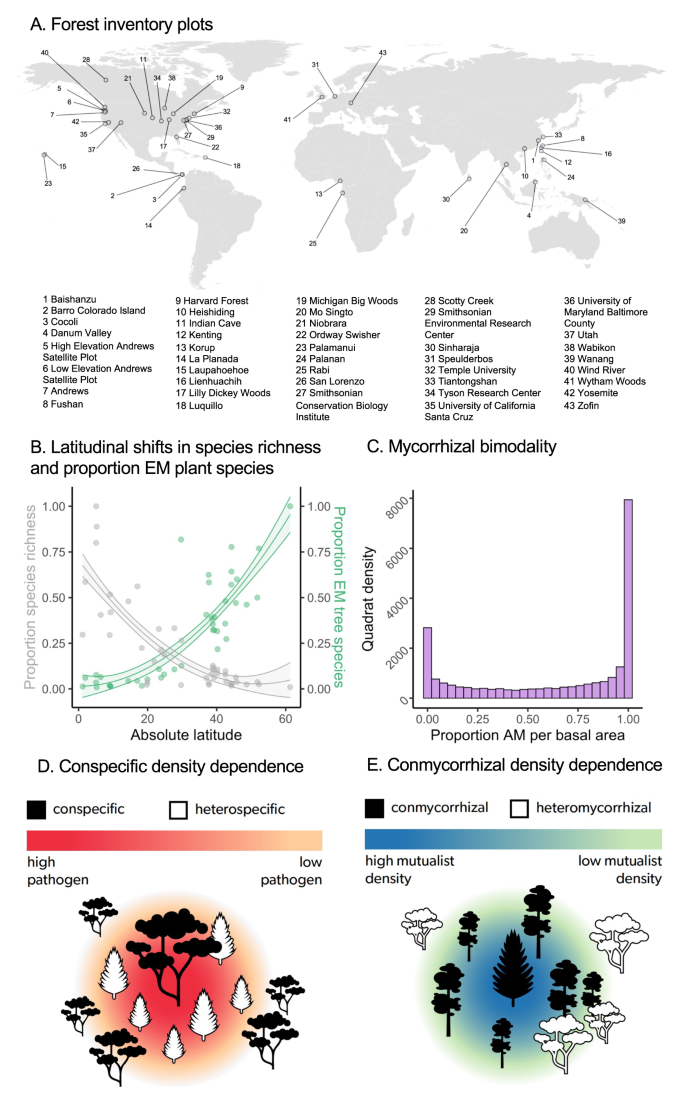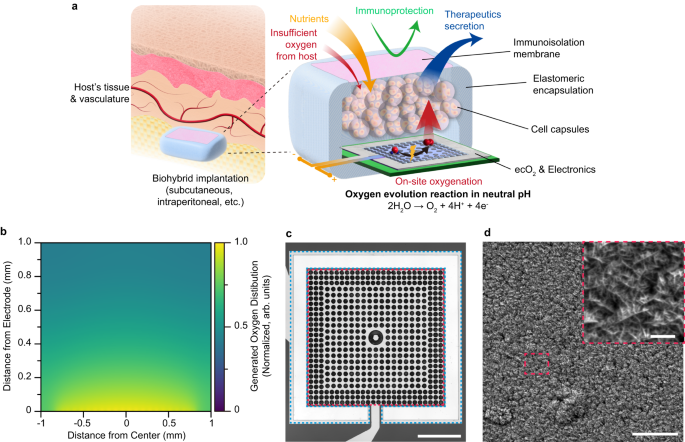2023-11-06 ワシントン大学セントルイス校
◆熱帯から極地に至る植生では、土中のキノコがその地域で繁栄できる木々の種類と数を直接決定するようです。この研究は、mycorrhizal fungiが森林の多様性を左右し、熱帯の多様な樹種を支える一方、北極圏の森林がごくわずかな種で支配される理由を説明しています。
<関連情報>
- https://source.wustl.edu/2023/11/how-underground-fungi-shape-forests/
- https://www.nature.com/articles/s42003-023-05410-z
菌根菌のフィードバックが世界の森林構造と多様性に影響を与える Mycorrhizal feedbacks influence global forest structure and diversity
Camille S. Delavaux,Joseph A. LaManna,Jonathan A. Myers,Richard P. Phillips,Salomón Aguilar,David Allen,Alfonso Alonso,Kristina J. Anderson-Teixeira,Matthew E. Baker,Jennifer L. Baltzer,Pulchérie Bissiengou,Mariana Bonfim,Norman A. Bourg,Warren Y. Brockelman,David F. R. P. Burslem,Li-Wan Chang,Yang Chen,Jyh-Min Chiang,Chengjin Chu,Keith Clay,Susan Cordell,Mary Cortese,Jan den Ouden,Christopher Dick,Sisira Ediriweera,Erle C. Ellis,Anna Feistner,Amy L. Freestone,Thomas Giambelluca,Christian P. Giardina,Gregory S. Gilbert,Fangliang He,Jan Holík,Robert W. Howe,Walter Huaraca Huasca,Stephen P. Hubbell,Faith Inman,Patrick A. Jansen,Daniel J. Johnson,Kamil Kral,Andrew J. Larson,Creighton M. Litton,James A. Lutz,Yadvinder Malhi,Krista McGuire,Sean M. McMahon,William J. McShea,Hervé Memiaghe,Anuttara Nathalang,Natalia Norden,Vojtech Novotny,Michael J. O’Brien,David A. Orwig,Rebecca Ostertag,Geoffrey G. (‘Jess’) Parker,Rolando Pérez,Glen Reynolds,Sabrina E. Russo,Lawren Sack,Pavel Šamonil,I-Fang Sun,Mark E. Swanson,Jill Thompson,Maria Uriarte,John Vandermeer,Xihua Wang,Ian Ware,George D. Weiblen,Amy Wolf,Shu-Hui Wu,Jess K. Zimmerman,Thomas Lauber,Daniel S. Maynard,Thomas W. Crowther & Colin Averill
Communications Biology Published:19 October 2023
DOIhttps://doi.org/10.1038/s42003-023-05410-z

Abstract
One mechanism proposed to explain high species diversity in tropical systems is strong negative conspecific density dependence (CDD), which reduces recruitment of juveniles in proximity to conspecific adult plants. Although evidence shows that plant-specific soil pathogens can drive negative CDD, trees also form key mutualisms with mycorrhizal fungi, which may counteract these effects. Across 43 large-scale forest plots worldwide, we tested whether ectomycorrhizal tree species exhibit weaker negative CDD than arbuscular mycorrhizal tree species. We further tested for conmycorrhizal density dependence (CMDD) to test for benefit from shared mutualists. We found that the strength of CDD varies systematically with mycorrhizal type, with ectomycorrhizal tree species exhibiting higher sapling densities with increasing adult densities than arbuscular mycorrhizal tree species. Moreover, we found evidence of positive CMDD for tree species of both mycorrhizal types. Collectively, these findings indicate that mycorrhizal interactions likely play a foundational role in global forest diversity patterns and structure.


